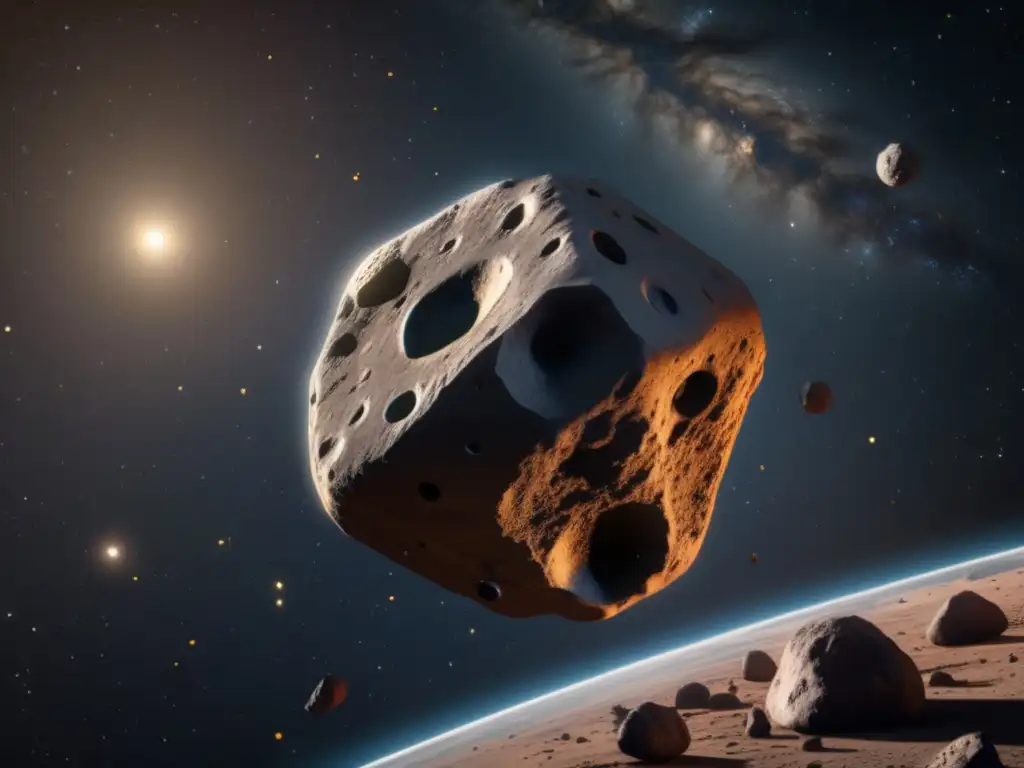Revisiting The Tale Of 99942 Apophis

Introduction
Asteroids have captured human fascination since ancient times. But one asteroid, in particular, has caused quite a stir in recent years - 99942 Apophis. Discovered in 2004, this near-Earth asteroid has been the topic of much discussion due to its potential threat of impact on Earth. Fortunately, later observations have ruled out the possibility of such an event. Nonetheless, Apophis continues to be a subject of interest for astronomers and space enthusiasts alike.
The Discovery of Apophis

The Beginning of the Search
The discovery of Apophis began with the LINEAR (Lincoln Near-Earth Asteroid Research) survey program, which uses robotic telescopes to search for near-Earth asteroids. In June 2004, LINEAR detected an object that initially appeared to be moving at an unusually fast rate, suggesting that it was close to Earth. Further observations confirmed that the object, later named Apophis after the Ancient Egyptian god of chaos and destruction, was indeed a near-Earth asteroid.
The Impact Scare
In December 2004, scientists announced that Apophis had a small chance of colliding with Earth in 2029. This announcement caused concern among the public and led to increased efforts to study the asteroid. Subsequent observations revealed that the likelihood of impact in 2029 was low, but not zero. Later studies showed that a 2036 collision was also a remote possibility.
Further Observations and Missions
Following its initial discovery, Apophis has been extensively studied through various observations and space missions. In 2008, the European Space Agency's Herschel Space Observatory confirmed that Apophis was bigger than previously thought, with a diameter of around 325 meters. Two years later, NASA's Deep Impact/EPOXI mission flew by Apophis at a distance of 14.5 million kilometers, collecting valuable data about the asteroid's composition and orbit.
What We Know About Apophis

Size and Composition
As mentioned earlier, Apophis has a diameter of around 325 meters, making it one of the largest near-Earth asteroids. Its composition is believed to be similar to that of primitive carbonaceous chondrite meteorites, which are known to contain water and organic molecules. Studying Apophis' composition can provide valuable insights into the early solar system's formation and evolution.
Orbit and Future Approaches
Apophis orbits the Sun every 323 days and comes relatively close to Earth every few years. Its closest approach to Earth occurred in January 2013, when it passed by at a safe distance of around 14.5 million kilometers. The next significant approach is expected in April 2029, when Apophis will pass within 31,000 kilometers of Earth's surface. This upcoming approach presents a unique opportunity for scientists to study the asteroid's orbit and learn more about its properties.
The Search for Other Near-Earth Asteroids
The discovery of Apophis highlights the importance of continued efforts to search for and study near-Earth asteroids. These objects pose a potential threat to Earth, and learning more about their properties can help us develop strategies to mitigate the risk of impact. Several ongoing programs, such as NASA's Near-Earth Object Observations Program and the Pan-STARRS survey, are dedicated to detecting potentially hazardous asteroids and studying their orbits.
Frequently Asked Questions

-
What is the likelihood of Apophis colliding with Earth?
Based on current observations, Apophis poses no significant threat of impact in the foreseeable future. The asteroid will pass by Earth at a safe distance of around 31,000 kilometers in 2029.
-
What is the significance of studying near-Earth asteroids?
Near-Earth asteroids are important to study because they can provide valuable insights into the early solar system's formation and evolution. Additionally, some of these objects pose a potential threat to Earth, so continued efforts to detect and study them are essential for developing strategies to mitigate the risk of impact.
-
What other near-Earth asteroids are being studied?
Several other near-Earth asteroids are being studied, including Bennu, Ryugu, and Itokawa. These asteroids have been visited by spacecraft, providing valuable data about their composition and properties.
-
Can near-Earth asteroids be mined for resources?
Some scientists believe that near-Earth asteroids could be a source of valuable resources such as metals and water. There are ongoing efforts to develop technologies for mining these asteroids, but the feasibility and ethical implications of such activities are still being debated.
-
How can I learn more about near-Earth asteroids?
There are many resources available for learning more about near-Earth asteroids, including NASA's Near-Earth Object Observations Program and the International Astronomical Union's Minor Planet Center. Additionally, websites such as asteroidrealm.com provide news and information about the latest asteroid discoveries and research.
Conclusion
Apophis has been a fascinating object of study since its discovery in 2004. Although early observations raised concerns about potential impact with Earth, later studies have ruled out such an event. Nonetheless, continued efforts to study near-Earth asteroids are crucial for understanding our solar system's history and mitigating the risk of impact. We encourage our readers to continue to learn more about these fascinating objects and share their thoughts in the comments section below.
Additional Resources

For those interested in learning more about asteroids, we recommend visiting the following websites:
 2002 AA29: Earth's Quasi-Satellite And Its Discovery
2002 AA29: Earth's Quasi-Satellite And Its Discovery The Discovery Of 'Oumuamua And Borisov: Interstellar Asteroids
The Discovery Of 'Oumuamua And Borisov: Interstellar Asteroids Unraveling 10115 1992 SK: The Least Eccentric Asteroid
Unraveling 10115 1992 SK: The Least Eccentric AsteroidIf you want to discover more articles similar to Revisiting The Tale Of 99942 Apophis, you can visit the Asteroid Discoveries category.
Leave a Reply

Articulos relacionados: